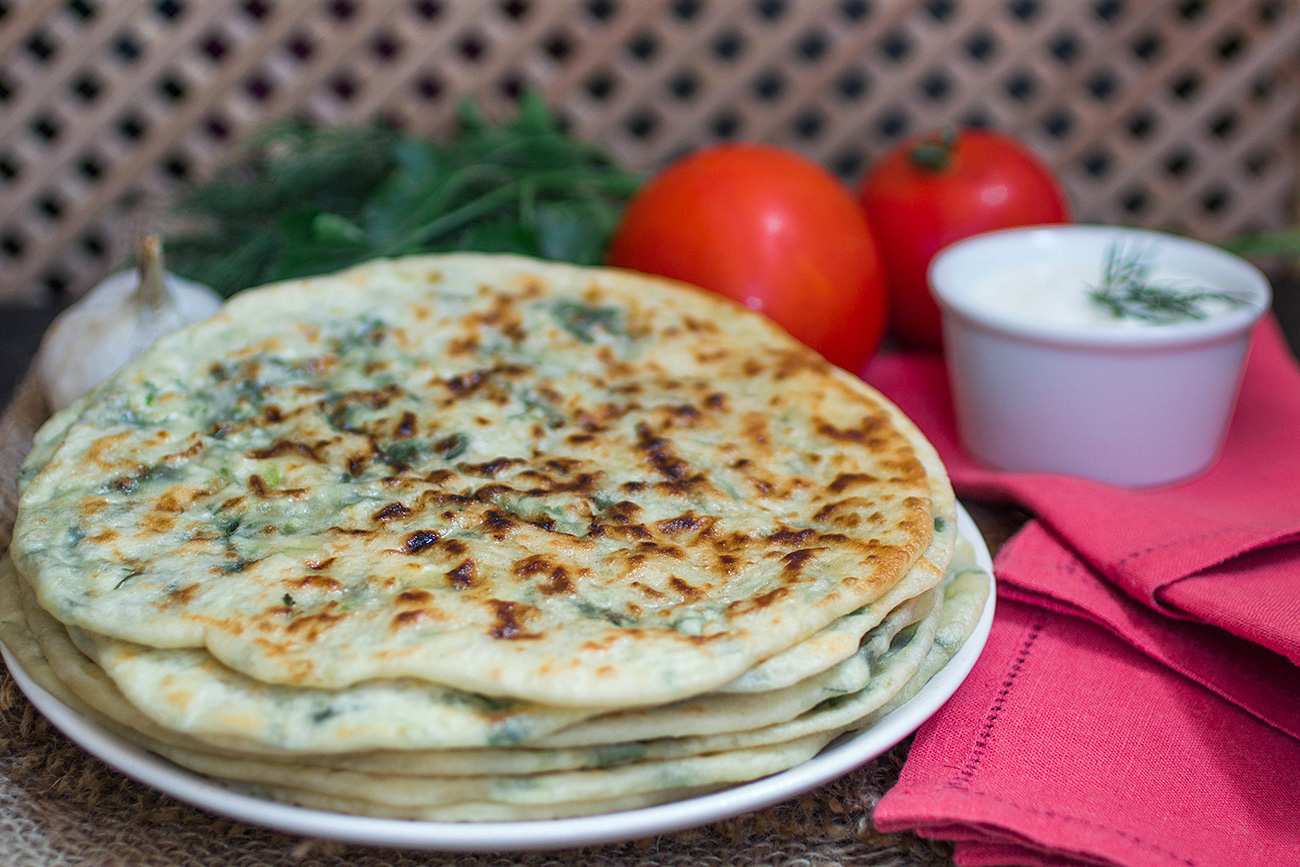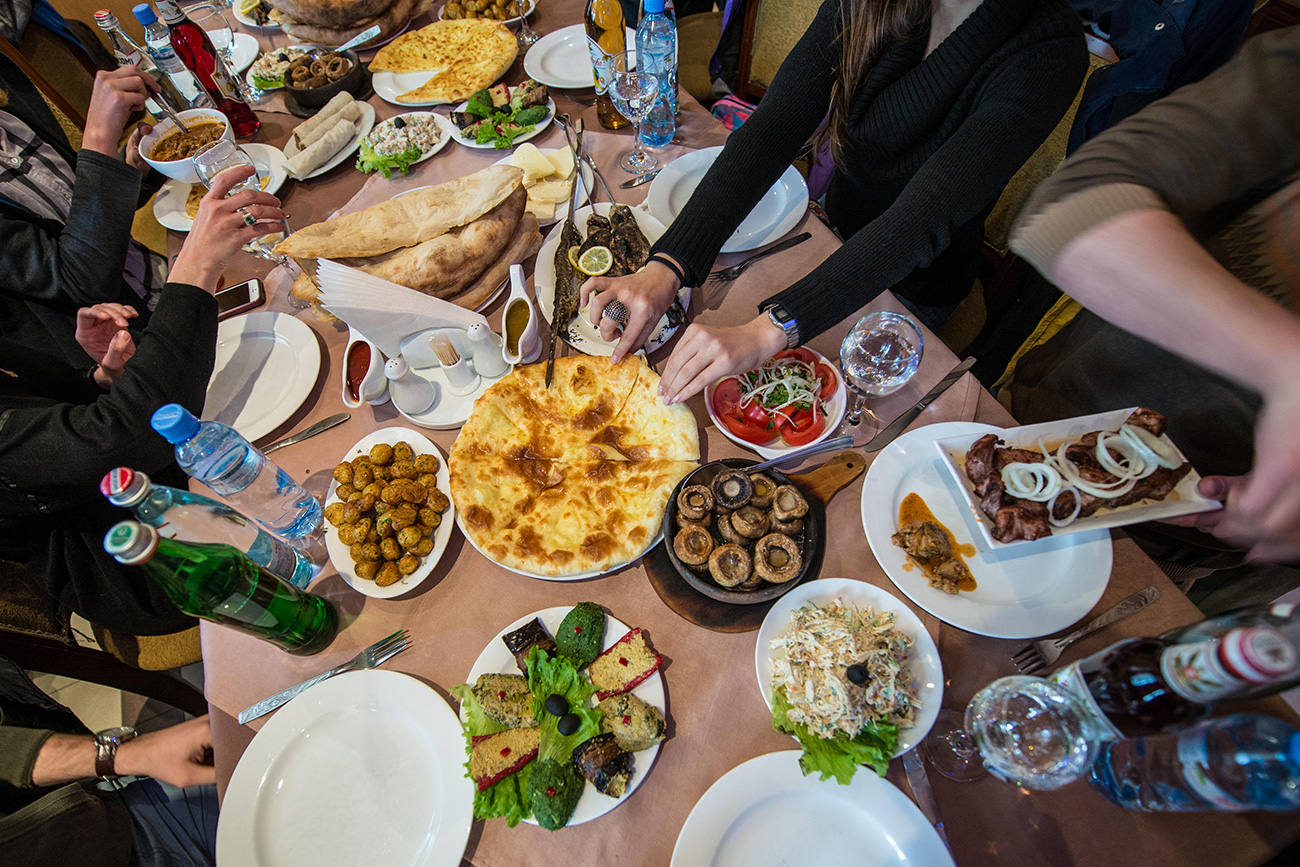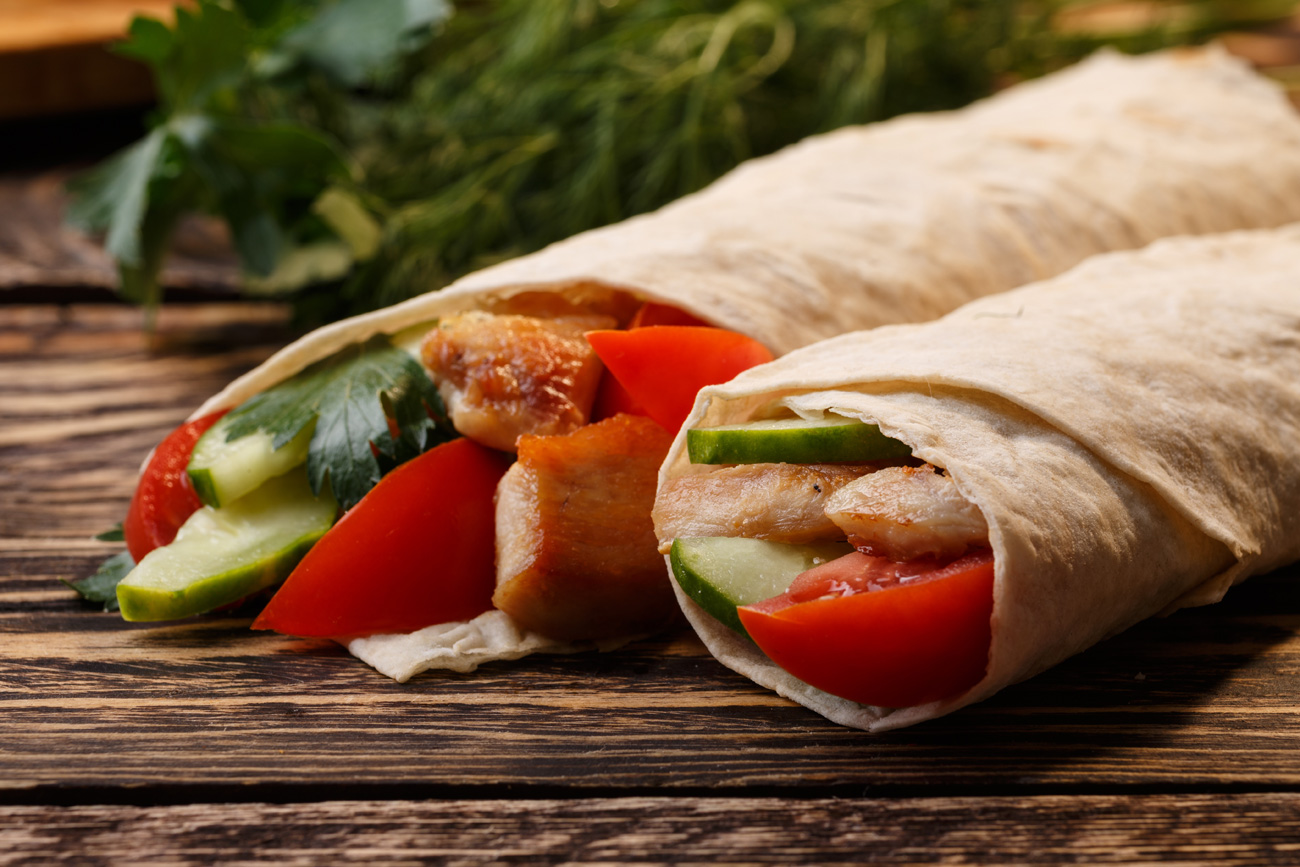Khychin: Amazing culinary welcome in the Caucasus

Khychin.
Legion MediaKhychin is a thin flatbread made of unleavened dough with a filling of boiled potato, homemade cheese, or meat with fresh herbs. The dish is so ancient that even the oldest people in the Caucasus cannot remember when it first appeared. Khychin is believed to be a symbol of the Sun, hospitality, wealth and generosity.
Every feast in the Caucasus has khychins, and are baked for all special occasions: weddings, the birth of a child, a funeral dinner, or a visit by guests. People normally make many at once, so that each guest has enough. Like any national dish, khychins are a litmus test of a young girl's culinary prowess. If she cooks tasty khychins, this means means she is a loving soul and will make a good wife.
Everyone who has visited the Caucasus at least once returns home with fond memories of the tasty local cuisine. Tourists are particularly thrilled by khychins, of which there are a multitude of varieties; every family or village has a recipe of their own. The most famous, however, are Balkar and Karachai khychins. The only difference is the cooking method: Karachais fry their flatbreads in butter or vegetable oil, while the Balkars use a dry frying pan and cover ready khychins in butter. Kychins are traditionally served in the form of a stack, and each flatbread has to be cut in four sections to resemble a cross within a circle, the ancient Solar symbol. Incidentally the word "cross" is translated as khych in many languages of the Caucasus. Perhaps this is how the word khychin originated.
 Traditional Caucasus food / Legion Media
Traditional Caucasus food / Legion Media
You do not need to come from Karachay-Cherkessia or Kabardino-Balkaria to make khychins. However, people living in the Caucasus claim that their authentic khychins are the tastiest, because the boiling point of butter and oil high in the mountains is lower than on the plains due to the air pressure.
Ingredients:
Dough:
- kefir or ayran, 500 ml
- flour, 700 g
- salt, 1/2 tbsp
Filling choices:
- Brined homemade cheese (suluguni or bryndza), 400 g
- boiled potatoes, 400 g
- butter, 50 g
- veal or lamb mincemeat, 700 g
- garlic, one clove
- bulb onion, one large bulb
- fresh koriander leaves, 50 g
- fresh mint, 50 g
- salt
- butter for frying (optional)
How to make them:
1. Mix the kefir, salt and flour in a large bowl and knead the mixture into elastic dough with your hands.
2. Prepare the filling.
For khychins filled with potato and cheese, take the boiled potatoes, mash them with a fork, grate the cheese, and add softened butter. Mix thoroughly.
For those with a meat filling, cut the herbs and onion thinly, crush the garlic clove, and mix everything with the mincemeat. Salt to taste.
3. Roll the dough into a string, then cut into portions.4. Take a piece of dough, make it into a ball, then flatten with the palm of your hand.
5. Roll the filling into a ball. The proportions are one unit of dough for 1.5 units of filling.
6. Put the filling in the center of the dough and wrap as tightly as possible. Be extra careful, you may not be able to do this correctly the first time.
7. You will end up with a ball of dough with the filling inside. Flatten it with your hands and roll with a rolling pin. The Balkar khychins are around 3 mm thick; while the Karachai ones are much thicker, nearly 1 cm.
8. Put the ready khychin aside and make more with the remaining dough.
9. Heat a frying pan. If you decided to make Karachai khychins, melt 50 g of butter in it. Fry the khychins and stack them on a plate. Cover each khychin in a coat of butter, and pay special attention to the edges.
10. Make sure you invite guests to enjoy your khychins. Eating by yourself would be a terrible breach of ancient Caucasus tradition!
Read more:
8 unwritten ‘rules’ when dining at a Russian’s home
Fried grenki: How to make use of stale bread
Skoblyanka – feast on roasted meats like a real Cossack!
7 Russian dishes that you probably don’t want to try
Meatless in Moscow: the best vegetarian/vegan eateries
If using any of Russia Beyond's content, partly or in full, always provide an active hyperlink to the original material.
Subscribe
to our newsletter!
Get the week's best stories straight to your inbox
